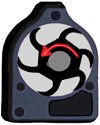A couple years ago, this flushing topic was kicked around a bit here:
http://www.cbrats.com/viewtopic.phpt=18 ... sc&start=0
To my eye, with a dealer input, I conclude engine flushing depends on
1. Your specific engine - Mfg, model - not all use same flush protocol
2. Read your Owner's manual and follow the instructions for your engine
3. What we did years ago may not apply now (hence 2. again)
Aye.
http://www.cbrats.com/viewtopic.phpt=18 ... sc&start=0
To my eye, with a dealer input, I conclude engine flushing depends on
1. Your specific engine - Mfg, model - not all use same flush protocol
2. Read your Owner's manual and follow the instructions for your engine
3. What we did years ago may not apply now (hence 2. again)
Aye.

